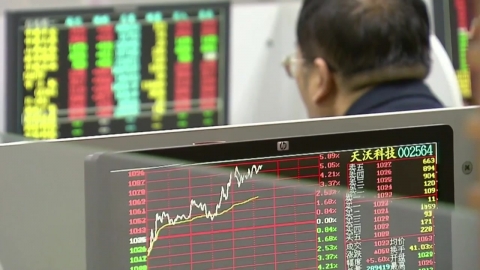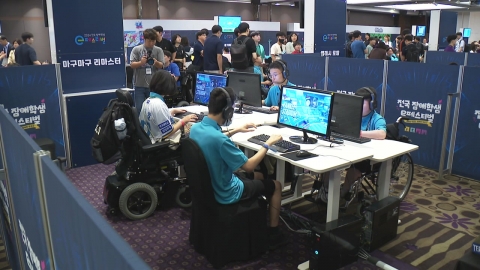Typhoon 'Kuraton' is coming up from the Philippines as it grows in size.
The route is fluid, but it is an emergency this week due to concerns that autumn typhoons could hit our country.
I will look into the detailed typhoon situation reporter.
Kim Min-kyung is in the YTN weather and disaster reporter studio.
Where is the typhoon now?
[Reporter]
Let's look at the satellite images where we can see the cloud situation.
A round cloud mass in the sea north of the Philippines and south of Taiwan is the 18th typhoon 'Kuraton'.
If you zoom in, the round part in the middle is called the "eye of the typhoon," and this typhoon has developed strong enough to be able to see clearly.
Currently, the maximum wind speed near the center is 47 meters per second, which is a very strong typhoon.
[Anchor]
But I heard that this typhoon is moving very slowly to the level of human walking.
[Reporter]
Correct:
The speed of the typhoon is 5km/h now.
In general, the speed of people walking comfortably is about 4 to 6 kilometers per hour, and the speed of jogging is about 6 to 8 kilometers per hour.
So it's moving very slowly to the level of human walking.
The problem is that the water temperature in the north of the Philippines and south of Taiwan, where typhoons pass now, is still hot at around 30 degrees, making it a good condition for typhoons to develop.
While passing through here, typhoons are expected to continue to develop into strong forces.
[Anchor]
Then where will the typhoon move in the future?
[Reporter]
Yes, do you want to see the graphic?
This is the expected path of the typhoon officially announced by the Korea, Japan, and the U.S. Meteorological Administration.
Each country's official typhoon route only announces the expected route for about 5 days.
First of all, if you look at the typhoon's path predicted by the Korea Meteorological Administration, it was announced that the typhoon would gradually move northwest, then suddenly turn around and go north through Taiwan.
The Japan Meteorological Administration and the U.S. Meteorological Administration also predict that the typhoon will advance northwest to the southwest of Taiwan and then turn northward toward the Korean Peninsula through Taiwan's interior.
[Anchor]
But why don't you just go northwest and turn around?
[Reporter]
I'll explain it by looking at the diary around the Korean Peninsula.
Let's first find out why the typhoon is moving west now.
The round part written in L is the 18th typhoon in question, 'Kuraton'.
The round circle in southern Japan is Jebi, the 17th typhoon of the year.
The North Pacific high pressure is blocked by Typhoon No. 17, and do you see the high pressure in inland China?
The typhoon rotates counterclockwise and the high pressure rotates clockwise, and in the absence of other winds, this wind meshes and strengthens the east wind, so the typhoon moves westward.
When the typhoon moves near Taiwan, the high pressure in China's interior has weakened, and the rapid flow of cold air, called a trough of atmospheric pressure, descends from the upper atmosphere, and the North Pacific high pressure expands again as Typhoon No. 17 escapes to the northeast.
Because of this, the typhoon does not move further west but moves upward as it rides along the edge of the North Pacific high pressure and takes on the fast air flow of the upper layer.
[Anchor]
The official course is only up to the northeastern coast of Taiwan, so how about after that? Are you really coming to the Korean Peninsula?
[Reporter]
Yes, I'll take a look at them one by one.
First of all, it is the Korean model KIM.
It gradually rises to the northeast after passing the Taiwan Sea, passes through the southern coast, and passes through the Korean Strait by the night of the 4th.
This time, it's the British model UM.
The British model also passes through Taiwan and then comes up to the northeast, moving a little closer to Japan than the KIM model, but also passes through the Korean Strait around the morning of the 4th.
The European model is a little different.
The typhoon remains in force until it passes through Taiwan, but the typhoon rapidly weakens as the central wind speed exceeds 1,000 hPa.
Given that even the spiral shape has disappeared, it seems likely to weaken to a tropical cyclone or a temperate cyclone.
In the process, rain clouds are also being created in front of Japan, and there is a possibility that the weakened rain clouds will head toward the Korean Peninsula on the 7th or early next week.
[Anchor]
All the routes are really different.
If you look at it as predicted by the numerical model, when will the typhoon come at the earliest?
[Reporter]
If you compare the Korean and British models, except for the European ECMWF model, which is considered to be weakening by typhoons.
The Korean model is predicted to be between four nights and five days, and the British model is predicted to be between morning and day on the 4th, so the typhoon is expected to affect the Korean Peninsula directly as early as the morning of the 4th.
[Anchor]
The fact that all models make different predictions means that the situation is very fluid, so why?
[Reporter]
There are two variables.
First of all, the key is how far west the typhoon goes and passes through Taiwan.
If you move to the right of Taiwan, you should put a little more weight on the possibility that the typhoon will not weaken and will live as a typhoon and come up near the Korean Peninsula.
After passing the left side of Taiwan, friction intensifies as it hits Taiwan's high terrain, and the typhoon's power weakens, possibly rising to the tropical low pressure region, not the typhoon.
The second is called 'atmospheric pressure valley', which is a fast flow of cold air from the north.
This is a picture I saw a while ago, but if the typhoon is close to the upper atmospheric trough, it will quickly move north on this flow, but if it is far away, it may weaken as it slowly rises.
So, the worst is that if you turn from the east of Taiwan and quickly rise as a strong force in the wind of the upper atmospheric trough, you can have a big impact on our country in three to five days.
[Anchor]
Then, how far do you think the typhoon has to go to ensure its course?
[Reporter]
I think the key is from the 2nd to the 3rd, when the typhoon changes its direction near Taiwan.
As I said earlier, how far west we move and how we ride the upper flow as we come up are big variables, so we need to take a careful look at the path of the typhoon for the time being.
[Anchor]
There are so many expected routes so far, so where is the most dangerous typhoon coming from?
[Reporter]
You may have heard of the right and left sides of typhoons at least once.
The right side of the typhoon is more dangerous than the left side.
Korea belongs to the western wind zone moving from west to east, so the wind becomes stronger when the wind of the typhoon itself, which blows counterclockwise, combines with this western wind.
On the other hand, on the left side of the typhoon, the wind speed weakens slightly as the typhoon wind and the westerly wind cancel each other out in opposite directions.
When a typhoon moves north to the west coast, Korea is on the right side of the typhoon and in the danger zone, and the damage from rain and wind increases mainly in the metropolitan area, Chungcheong and Honam regions.
If a typhoon passes through the Korean Strait, Japan will be at risk, causing more typhoon damage than Korea.
However, if you pass close to Korea, even if you are on the left side of the typhoon, the Yeongnam coast and the east coast cannot escape from heavy rain and strong winds, so caution is needed.
[Anchor]
I'm worried that the autumn typhoon is strong, but how strong is the typhoon expected?
[Reporter]
This typhoon, now the intensity of the 'very river', is expected to rise to the 'medium' century when it gradually weakens as it passes through Taiwan and moves north toward the Korean Peninsula.
This is because the sea temperature around the Korean Peninsula has been lower than in early September.
When you think of 'Autumn Typhoon', you'll often think of 'Hinnamno' in 2022.
However, Hinnamno was a typhoon that affected early September, and the sea surface temperature reached its peak at that time.
When it landed on the Korean Peninsula and passed through Yeongnam, it was very strong due to the strength of the 'river'.
It is the end of September and when the typhoon rises, it is expected to be weaker than 'Hinnamno' due to the early October.
[Anchor]
It's quiet in the summer, but why does the typhoon come towards us in the fall?
[Reporter]
The average number of typhoons is 25.1, but there are 18 typhoons now.
There were few typhoons that affected Korea, but in the tropical Pacific Ocean, the seeds of typhoons continued to be made even in the summer. It's because the so-called '∀ Road' has opened now, in the fall of
.
As the power of the North Pacific high pressure that covered the Korean Peninsula gradually weakens in the summer, it contracts and comes down, and typhoons are more affected by typhoons in the fall because they come up along the edge of this North Pacific high pressure.
[Anchor]
There must be a lot of people who took a day off for Armed Forces Day and National Foundation Day, but I'm nervous to hear that a typhoon is coming.
Will there be any disruption to the operation of aircraft or passenger ships?
[Reporter]
Since the typhoon is still at a distant sea, it is unlikely to be directly affected by the typhoon until mid-week.
However, with cold air falling in the upper layers near the Korean Peninsula, rain and wind are expected to be frequent during the holiday season as typhoons strongly collide with the warm and humid air.
First of all, I have to be more careful of the wind than the rain tomorrow. The amount of rain
is not much, about 5 to 10mm inland, and strong winds with instantaneous wind speeds of 15 to 20m per second are predicted nationwide.
In particular, special attention should be paid to safety accidents as high waves of up to 4m are expected with strong winds around the West Sea and Jeju seas.
On the 3rd to 5th, the National Foundation Day holiday, a lot of rain is expected in the south and east.
There is no specific precipitation yet, but air with different properties is expected to hit hard, and as the typhoon approaches, there is also a direct or indirect effect of the typhoon, so it is better to consider it when planning a trip.
[Anchor]
Can another typhoon come after Kraton?
[Reporter]
Yes, there is a full possibility of typhoon impact in October.
Typhoons that recently affected Korea in October include 'Chaba' in 2016, 'Kongrey' in 2018, and 'Mitak' in 2019.
The 10th typhoon 'Jev' in 1998 occurred on Oct. 11 and affected our country from Oct. 16-18.
And do you want to see the screen?
The red color is higher than the average year, and the blue color is lower.
The area near the Korean Peninsula is the highest compared to the average year.
The area near the tropical Pacific Ocean, where typhoons develop, is also experiencing higher sea surface temperatures than usual.
The screen is now in place, and as it is likely to switch to La Niña this fall and the effects of warming overlap, sea temperatures in the Western Pacific will remain high until late,
This year, typhoons are likely to occur later than other years.
[Anchor]
So far, we've checked the typhoon situation with Kim Min-kyung, a YTN weather and disaster reporter. Thank you.
※ 'Your report becomes news'
[Kakao Talk] YTN Search and Add Channel
[Phone] 02-398-8585
[Mail] social@ytn. co. kr
[Copyright holder (c) YTN Unauthorized reproduction, redistribution and use of AI data prohibited]
Weather
View the full list of articles- [Weather] It's going to rain with cold air tomorrow.Typhoon Nearby in the Late Week, Rainstorms in Southern and Yeongdong
- [Weather] Until today, the late heat...Tomorrow's rain temperature is 'tuk', Seoul's daytime is 22℃.
- [Weather] Until today, the late heat...Tomorrow's rain temperature is 'tuk', Seoul's daytime is 22℃.
- [Weather] "The temperature drops" after tomorrow's rain...Nearby typhoon in the second half of the week, southern rain and wind, sea swells

![[Weather] It's going to rain with cold air tomorrow.Typhoon Nearby in the Late Week, Rainstorms in Southern and Yeongdong](https://www.ytn.co.kr/img/news/default_img.jpg)





